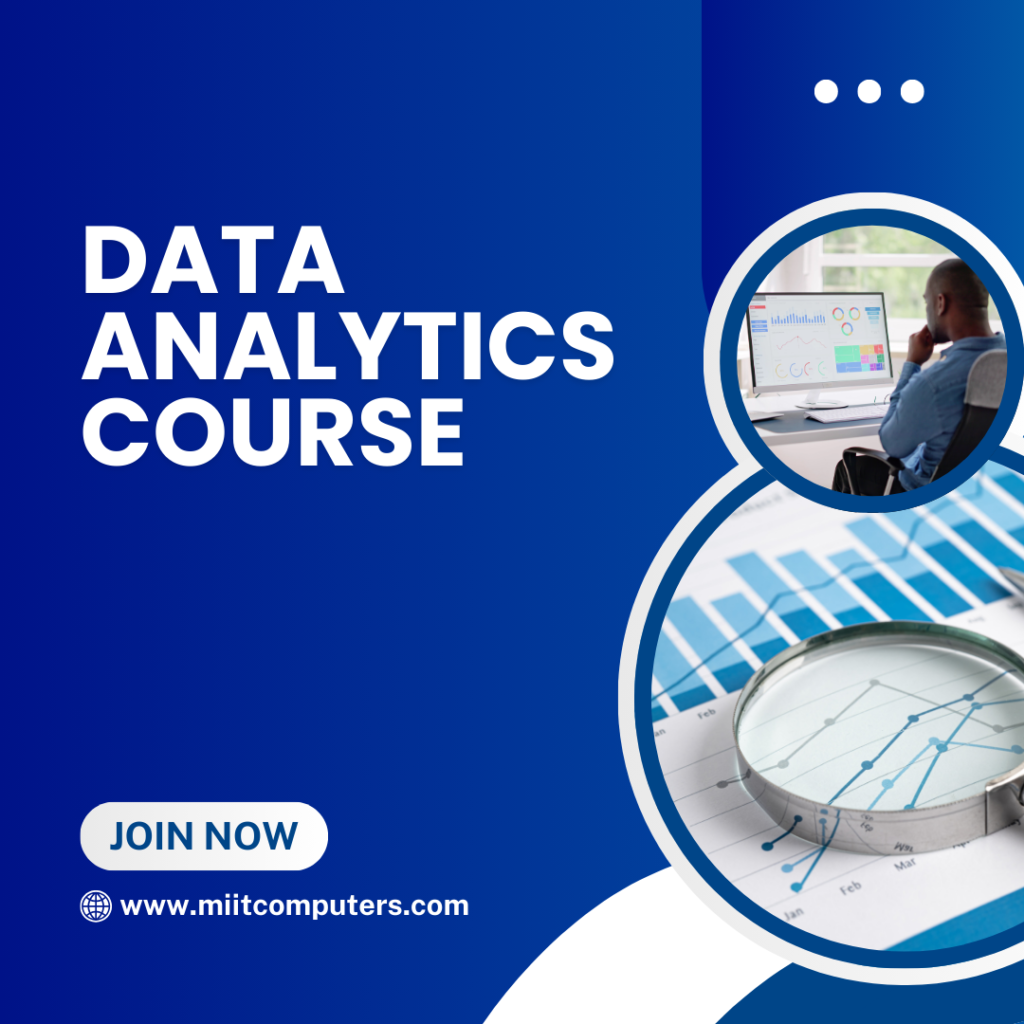DATA ANALYTICS
What Is Data Analytics
Data analytics is the process of examining raw data to draw meaningful conclusions that can inform decision-making. It involves using various tools, techniques, and processes to collect, clean, transform, and interpret data. The goal is to uncover patterns, trends, correlations, and insights that can help organizations optimize their performance, improve efficiency, make strategic decisions, and gain a competitive advantage. Data Analytics Course In hayathnagar Hyderabad.
Data analytics is a multidisciplinary field that combines elements of statistics, computer science, and domain expertise. It plays a crucial role in today’s data-driven world, where organizations generate and collect vast amounts of information from various sources. Best Data Analytics Course In hayathnagar Hyderabad.
Types of Data Analytics:
Data analytics is often categorized into four main types:
- Descriptive Analytics: Focuses on summarizing historical data to understand “what happened” or “what is happening.” It uses techniques like data aggregation, data mining, and visualization. Data Analytics Course Near me.
- Diagnostic Analytics: Aims to understand “why something happened” by examining historical data to identify the causes of events or trends. Techniques include drill-down analysis, data discovery, and correlations.
- Predictive Analytics: Uses historical data and statistical models to forecast “what might happen in the future.” Techniques include machine learning, forecasting, and predictive modeling.
- Prescriptive Analytics: Goes beyond prediction to suggest “what actions should be taken” based on the insights gained from descriptive, diagnostic, and predictive analytics. It utilizes techniques like optimization, simulation, and recommendation engines. Data Analytics Course Training With Placements In MIIT Computer Education Institute Hayathnagar Hyderabad.

Data Analytics Course - Frequently Asked Questions
Data analytics is the process of examining raw data to draw meaningful conclusions that can inform decision-making. It involves collecting, cleaning, transforming, and interpreting data using various tools and techniques.
Data analytics skills are highly in demand across various industries. It offers excellent career opportunities, the ability to solve complex problems, and the chance to drive data-driven decisions that impact businesses and organizations.
The four main types are: * Descriptive Analytics: What happened? * Diagnostic Analytics: Why did it happen? * Predictive Analytics: What might happen in the future? * Prescriptive Analytics: What 1 actions should be taken?
The duration varies greatly depending on the type of course. Online courses can range from a few weeks to several months. Bootcamps are typically intensive and last for a few months. Degree programs usually take 2-4 years for a Bachelor’s and 1-2 years for a Master’s. Diploma and certificate programs can vary.
The cost also varies significantly. Online courses can range from free to several hundred dollars. Bootcamps can cost several thousand dollars. University degree programs are the most expensive.
Start your Salesforce journey today at MIIT Computer Education and become a certified Data Analytics professional!
